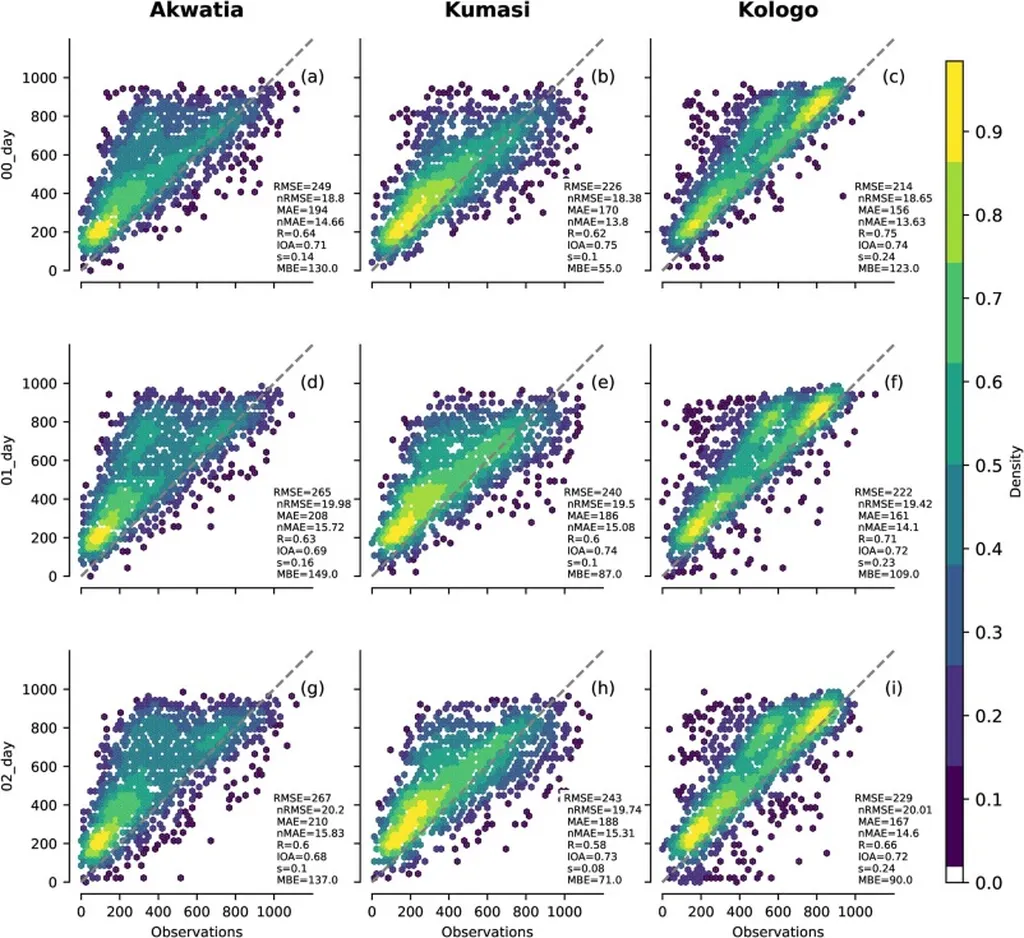In the quest to harness the sun’s power more effectively, researchers have made a significant stride in improving solar radiation forecasts, a critical factor for photovoltaic (PV) power generation. A recent study led by Ji Won Yoon from the Center for Climate/Environment Change Prediction Research at Ewha Womans University in Seoul, South Korea, has demonstrated the first successful application of the WRF-Solar model in South Korea, offering promising advancements for the energy sector.
The study, published in the journal “Energy Conversion and Management: X,” compared the performance of the Weather Research and Forecasting (WRF) model and the WRF-Solar model in predicting global horizontal irradiance (GHI) during the summer of 2023. GHI is a key metric for solar power generation, as it measures the total amount of solar radiation received by a horizontal surface.
Yoon and her team conducted experiments using both WRF (referred to as CNTL) and WRF-Solar (EXP_R and EXP_F). The WRF-Solar experiments utilized specialized parameterization schemes, including the Thompson–Eidhammer microphysics and Deng shallow cumulus schemes, as well as the Fast All-sky Radiation Model for Solar applications (FARMS) schemes in EXP_F.
The results were compelling. Both EXP_R and EXP_F outperformed the standard WRF model, with root mean square error (RMSE) improvements ranging from 7.2% to 19.9% for EXP_R and 6.8% to 37.0% for EXP_F. Notably, EXP_F showed significant improvements under overcast conditions, achieving up to 37.0% better performance.
“WRF-Solar showed better cloud detection performance than WRF, which is crucial for accurate solar radiation forecasting,” Yoon explained. This enhanced accuracy can have substantial commercial impacts, as better forecasts lead to more efficient solar power generation and improved energy management.
The spatial distribution analysis further highlighted the advantages of WRF-Solar. EXP_F outperformed EXP_R, demonstrating the value of the FARMS schemes in improving forecast accuracy. While all experiments performed similarly under clear sky conditions, WRF-Solar’s superior performance under cloudy and overcast conditions is particularly noteworthy.
This research holds significant implications for the energy sector. Accurate solar radiation forecasts are essential for optimizing PV power generation, grid management, and energy trading. As Ji Won Yoon noted, “This study highlights the potential of WRF-Solar to enhance energy management and solar power planning.”
The successful application of WRF-Solar in South Korea opens new avenues for research and development in solar energy forecasting. As the world continues to shift towards renewable energy sources, advancements in forecasting technology will play a pivotal role in ensuring a stable and efficient energy supply.
In the words of Ji Won Yoon, “Improving solar radiation forecasts is not just about better technology; it’s about building a more sustainable future.” This research is a step in that direction, offering valuable insights and tools for the energy sector to harness the power of the sun more effectively.

